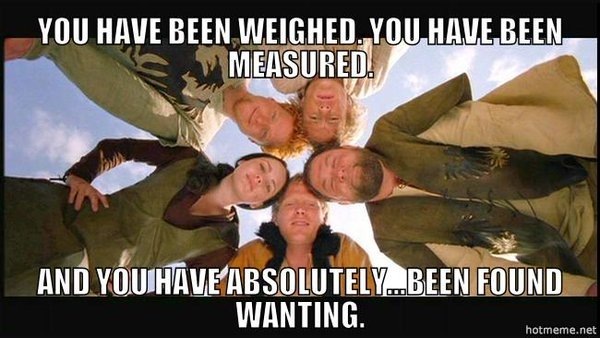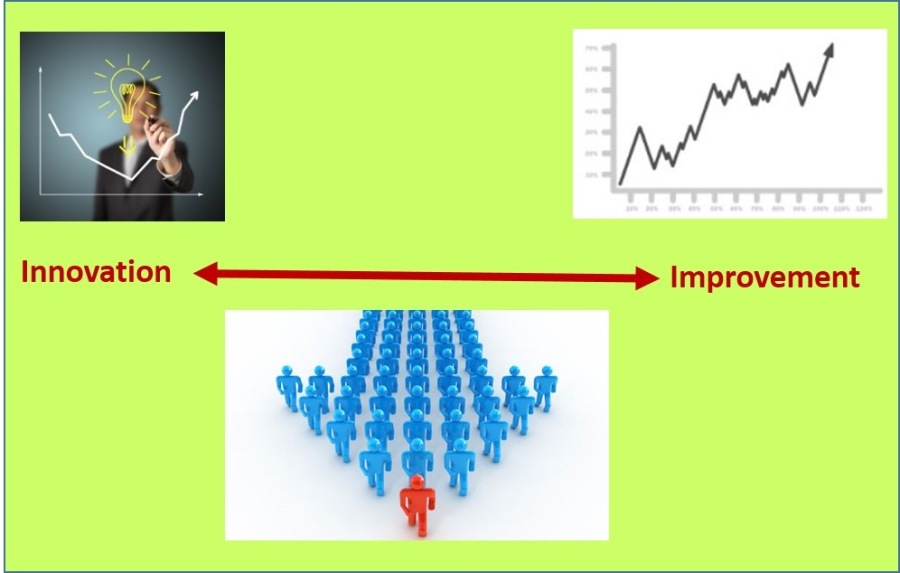Leadership Skill: Prioritization and Focus

It was July 28, 1979, a hazy, humid Saturday in West Medford, Massachusetts. I was sweeping the floors of 34 Wyman Street, a 13 room yellow shingle, 1890s Queen Anne Victorian. As I went from room to room, I’d occasionally put down the dustpan or broom and go downstairs to get a screwdriver or a hammer to make a home repair I’d been meaning to attend to for months or years. I’d sweep, tighten a door knob, pick up some dirt and dust, screw down a window latch, get a new garbage bag for the dust, take off some obsolete window hardware, wash out the dustpan, clean the smudges off the mirror in the bathroom where I was washing off the dustpan. . .
This flurry of harried activity was actually the culmination of more than a year of an extremely focused campaign. After 9 years as a successful booking agent for lecturers and performing artists, I had decided to go to business school. I was 31, a bit old for such an adventure and I’d reasoned that if I was going to make this worth it, I should go to a really good business school. I researched and applied to 8 of the world’s best business school –with all that that entailed MCATs, essays, recommendations. I got into 5 of them, much to the surprise of my friends and (I think) the mother of my two small children; I turned down Harvard and accepted the London Business School’s offer. We sold everything we owned including 34 Wyman Street and prepared to move across the Atlantic.
Kirsten had gone to visit her mother in Kentucky, not being especially happy to give up that house. I had closed the sale the previous day and now I was imitating the Ajax liquid white tornado, or Mr. Clean, getting the house “broom-clean” to turn over to my neighbor, Jock, who had bought the manse for more than list. I tore around form room to room, interrupting one task to start another, half-finishing that before beginning another.
My mother, Nan Culler arrived to help. She followed me from room to room, asking what she could do. I was at a loss to offer any direction or even to think of anything she could do.
Nan Culler was an amazing woman. She had gone back to work as a math teacher when I was 8. Sometime after that a church member asked her if she would be willing to try something new and she became a computer programmer in 1956. I still remember the tour of the 3 story shoe factory in Laurence Mass, where she and others at Raytheon worked on the space program. I can hear her telling me about “looking for bugs,” literally looking through rows of vacuum tubes for the place where a cockroach had crawled across two contact points shorting out a part of the program. She ultimately was on the team that programmed the operating system for the IBM 360.
When I bought this house I was nervous about the payments. My mother had calmly asked my mortgage amount and rate and taxes and spit out my monthly payment -30 year compound interest calculated in her head with a calming smile and said, “Don’t worry. You can afford it.”
Nan Culler quietly observed by hysteria for about 10 minutes and finally said, “Alan, STOP!” She was a quiet woman, very rarely raising her voice, but she did know how to get my attention. I stopped.
“Alan, what is the one thing that you need to do? What is the one thing that you cannot get on the 9:00 PM British Airways plane tonight without doing?”
“I dunno, Mom. I guess. . . pack?”
She had that astonished look on her face – the one that said “how can someone so smart be so dumb?” She set her lower jaw forward, half-smiled with her look of benevolent-determination-that-will-not-be-denied and said, “Alan Cay Culler, give me that broom, put your tools away and Go Pack!”
It was a very successful intervention. I packed. I turned the keys over to Jock, who was renovating almost everything in the house, anyway (except the kitchen, where he liked what we had done.) I made the plane, moved to London, got an MBA, and began a 35 year career in consulting.
These days, some of my work involves helping others who are stuck to prioritize and focus. Sometimes it is as seemingly simple as asking my mother’s question,
“What is the one thing. . . ?"
Sometimes I use this question with others, (and if I’m honest on myself) to help move from insight to action, to start the change-ball rolling, or to help impose a chronological order on a series of tasks. Sometimes it helps me to know where to start with my page long To-Do list so I can at least cross something off – even if I have to write something new on the list that I’ve already done just to have the “It’s-all-about-the-checkmark” gratification.
Sometimes however helping someone prioritize or focus is much more complex.
I see it when a leadership team wants to do all the possible strategies that they brainstormed. I see it when an innovation team can’t choose which product to prototype. I see it when a continuous improvement team can’t decide what to work on or which solution to pick – the dead-easy one or the one with the highest impact.
It turns out that the inability to prioritize well and to focus is one of the largest leadership problems I run into. Imagine this - leadership is about ensuring direction, (we lead towards something or away from something) – how can we do that if we are unclear about what is most important? Leadership is also about getting others to follow us – to become leaders in their own right –how can they do that without a focus?
But lack of prioritization is a very human failing – we all get stuck not knowing where to put our focus from time to time. Because it happens to me so often, I’ve tried to examine why it happens.
Let’s go back to my summer of ’79 white tornado experience. One reason I was so unfocused is that I was overwhelmed by options. I’d go into a room and see “something that needed doing” and put it on my list and start it. I hadn’t set a context for what I was doing and without a context, every task was equally important and should be done now, with the described disastrous results.
Context for that task was that I was turning over the house to the new owner that day and flying off to start a new life. Context for the leadership team struggling with strategic options should be the vision and purpose of the organization, what customers know about you and what they expect from you.
Context for continuous improvement team choosing solutions rests in the question “what problem are we trying to solve. It leads to evaluation of each solution with a tool like the prioritization criteria matrix.
The Criteria Matrix might also be useful for the innovation team choosing what to prototype, but these folks often face another reason for the difficulty in prioritizing, there are too many unknowns.
For me in 1979 the unknowns were paralyzing. Would I find an apartment? Would I succeed at business school? If I did could I actually get hired by a consulting firm? Would Jock reject the house if a doorknob fell off?
For the innovation team the unknowns may be just a paralyzing. Prototyping is expensive. New technologies don’t often work the way they are expected too. For this team the answer may be in reducing unknowns by prototyping component parts.
That hazy humid day in July, 36 years ago, what was really going on with me afflicts many who have trouble prioritizing.
There were too many unspoken and conflicting emotions wrapped up in this decision. I wanted to turn over the house in the best possible condition to the new owner who was my next door neighbor and a friend. I felt guilty that I hadn’t maintained the house like I should have and there were many repairs that I had put off while working and applying to business school and selling everything I owned. I was worried about all the unknowns I have described above. I had many mixed emotions about selling the “best house I had ever owned and one where we had put our heart and soul into renovating the kitchen and one which my wife loved. I entertained second and third thoughts about my chosen path and career change.
When working with leadership groups these unspoken thoughts, opinions and emotions are often what bogs prioritization down. The discussion goes to how we will make a decision or who will make it, but underlying the discussion is unresolved conflict and unspoken disagreement. Sometimes it is my job to ensure that the unspoken is voiced and addressed so that the group can move to action and focus on getting results.
Sometimes that’s as simple as pointing out that a decision has already been made, let go of your ambivalence and quit revisiting it and take action. (“Go Pack!”) Truthfully, it is rarely that simple in my clients’ lives or in my own, but when it is I think of Nan Culler.
“Alan what is the one thing you need to do?”
"Articles from Alan Culler
View blog
Heath Ledger, Mark Addy, Paul Bethany, Laura Fraser, and Alan Tudyk in the 2001 Columbia Pictures Fi ...

“Leadership!” “Those at the top must lead the parade!” “Can’t do anything without the leaders.” · A ...

https://www.freeimages.com/photo/candles-1161780 @korionovThe cold sun sets earlier and rises later ...
Related professionals
You may be interested in these jobs
-
Ruby Developer
Found in: beBee S2 US - 4 days ago
Derex Technologies Inc San Jose, United States Full timeCompany Description · Derex Technologies Inc specializes in providing IT consulting, staffing solutions and software services. Globally headquartered in Harrison New Jersey since 1996 Derex delivers the highest quality technology professionals and an array of customized IT talent ...
-
General Production Worker
Found in: SonicJobs Direct Apply US - 6 days ago
Direct apply
Aerotek Hagerstown, United States Full timeDescription: · The general production worker will be allocated to either the "make-up" or "packaging" lines for croissant production. A breakdown of each positions responsibilities is as follows:Make-Up- Hand curling and twisting dough (comes out as a small cylindrical product) i ...
-
Retail Sales Associate Part Time>
Found in: Lensa US P 2 C2 - 2 days ago
PetSmart Surprise, United States Part timePetSmart, Inc N Prasada Pkqy [Sales Associate / Team Member] As a Retail Sales Associate at PetSmart, Inc., you'll: Welcome customers to the store, facilitate an easy check out process as a cashier; Ensure the safety of all living pets in the stores, including fish, reptiles, bir ...




Comments
Alan Culler
6 years ago #7
Thank you for your comments @Vincent Manlapaz Picking among options is tough, but it starts with the realization that one cannot do everything. What paralyzes us sometimes is uncertainty - a lack of information about the outcome of options. For that, I think the only answer is to act -to move far enough down a path so that we see it more clearly. With new information -we may have to pivot to something else -if I had gotten in to none of the business schools I applied to, I would have had to choose a different path. Thanks again for your support. Alan
Alan Culler
6 years ago #6
Wow, Thanks @Don Philpott =never really though of my writing in poetic or musical terms - I appreciate your support Alan
Alan Culler
7 years ago #5
@Ali Anani Thank you so much for your kind comments and continuing support. It means a lot coming, as it does, from such a great storyteller. Priorities that come from deeply held view of personal purpose are best. I think many of us are still searching for the "Why am I here? -No really Why am I here? moment. Thanks again, Ali Alan
Alan Culler
7 years ago #4
Harvey Lloyd Thanks so much for your support. I have done a lot of work over the years helping leadership teams bring the "unspoken" out into the light. People have been concerned that the conflict would be destructive, but to the contrary, the conflict led to compromise and then to shared commitment a very constructive process. Thanks again, Harvey Alan
Alan Culler
7 years ago #3
Ali Anani Thank you so much for your kind comments and continuing support. It means a lot coming, as it does, from such a great storyteller. Priorities that come from deeply held view of personal purpose are best. I think many of us are still searching for the "Why am I here? -No really Why am I here? moment. Thanks again, Alai Alan
Harvey Lloyd
7 years ago #2
Ali Anani
7 years ago #1